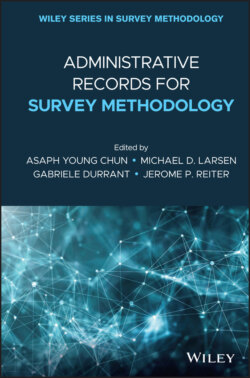Читать книгу Administrative Records for Survey Methodology - Группа авторов - Страница 49
2.4.1 Statistical Data Enclaves
ОглавлениеStatistical data enclaves, or Research Data Centers, are secure computing facilities that provide researchers with access to confidential microdata, while putting restrictions on the content that can be removed from the facility. The different advisory committees of the two largest professional association (ASA, and the American Economic Association, AEA), pushed for easier and broader access for researchers as far back as the 1960s, though the emphasis then was on the avoiding the cost of making special tabulations. The AEA suggested creating Census data centers at selected universities (Kraus 2013). In the 1990s and early 2000s, similar networks started in other countries. In Canada, the Canadian Foundation for Innovation (CFI) awarded a number of grants to open research data centers, with the first opening at McMaster University (Hamilton, Ontario) in 2000.14 The creation of the RDCs was specifically motivated by the inability to ensure confidentiality while providing usability of longitudinally linked survey data (Currie and Fortin 2015).
In the United States, a 2004 grant by the National Science Foundation laid the groundwork for subsequent expansion of the (then Census) Research Data Center network from 8 locations, open since the mid-1990s, to over 30 locations in 2017. One of the key motivations was to make the newly available linked administrative data at LEHD accessible to researchers. The network operates under physical security constraints managed by the Census Bureau and the IRS, in locations that are considered part of the Census Bureau itself, and staffed by Census Bureau employees.
Statistical data enclaves can be central locations, in which a single location at the statistical agency is made available to approved researchers. In the United States, NCHS and BLS follow this model, in addition to using the FSRDC network. In Canada, business data can be accessed at Statistics Canada headquarters, while other data may be accessed both there and at the geographically dispersed RDCs, which obtain physical copies of the confidential data.
Some facilities are hybrid facilities. The statistical processing occurs at a central location, but the secure remote access facilities are distributed geographically. The U.S. FSRDCs have worked this way since the early 2000s. A central computing facility is housed in the Census Bureau’s primary data center. Secure remote access is provided to approved researchers at designated sites throughout the county, namely the FSRDCs. Each of the FSRDC sites is a secure Census Bureau facility that is physically located on controlled premises provided by the partner organization, often a university or Federal Reserve Bank. The German IAB locates certified thin clients in dedicated rooms at partner institutions. Secure spaces are costly to build and certify. Recently, institutions in the United Kingdom have attempted to reduce the cost by commoditizing such secure spaces (Raab, Dibben, and Burton 2015). In France, the Centre d’accès sécurisé distant aux données (CASD) has a secure central computing facility, and allows for remote access through custom secure devices from designated but otherwise ordinary university offices, which satisfy certain physical requirements, but are not dedicated facilities. Similar arrangements are used by Scandinavian NSOs, as well as by survey organizations such as the HRS. Remote access to full desktop environments within the secure data enclave, commonly referred to as “virtual desktop infrastructure” (VDI), from regular laptops or workstations, is increasingly common.
The location of remote access points is often limited to the country of the data provider (United States, Canada), or to countries with reciprocal or common enforcement mechanisms (within the European Union, for European NSOs). Cross-border access, even within the European Union, remains exceedingly rare, with only a handful of cross-border secure remote access points open in the European Union. The most prolific user of cross-border secure remote access points, as of this writing, is the German IAB, with multiple data access points in the United States and a recently opened one in the United Kingdom.
